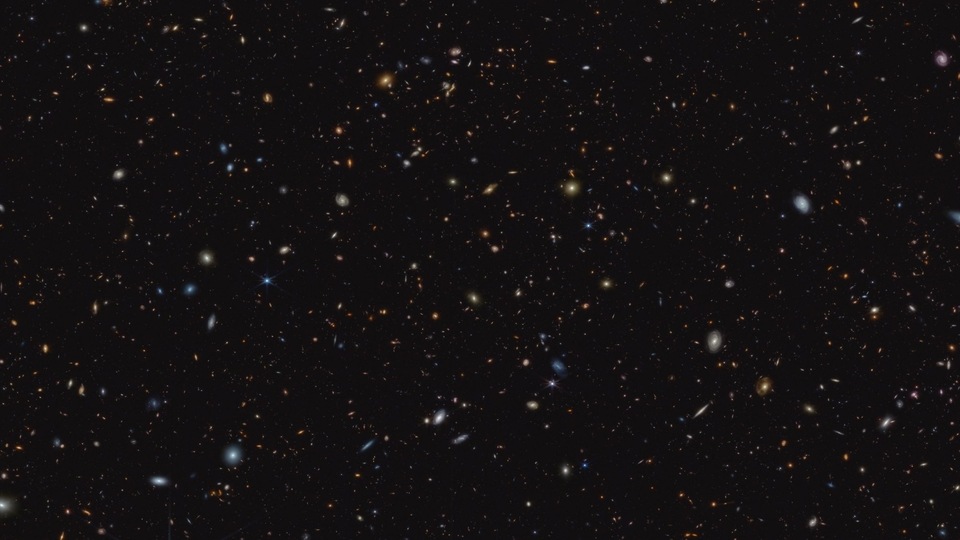First light in Universe revealed! James Webb Space Telescope spotlights 717 ancient galaxies
First light in the Universe exposed! The James Webb Telescope has made an incredible discovery.


The James Webb Space Telescope has made an incredible discovery. It has revealed the first light that had suffused the early Universe. Webb Telescope has revealed hundreds of ancient galaxies that may be among the first ever to exist in the universe. This is a significant leap from the handful of galaxies that were previously known during that time.
According to a new study by the JWST Advanced Deep Extragalactic Survey (JADES), these very young galaxies displayed complex structures and clusters of star formation just 600 million years after the Big Bang. The study collected observations from two small areas in the sky, one in the Ursa Minor constellation and another in the direction of the Fornax cluster. Within these regions, over 700 young galaxies were discovered, providing a glimpse of what the cosmos looked like in its earliest stages, reported space.com.
Kevin Hainline, an assistant research professor at the Steward Observatory, gave an astonishing and awe inspiring description. He said it is like witnessing the first five minutes of a movie that represent the entire universe! These galaxies are responsible for producing the elements and complexity that we observe in the world today, space.com reported.
This discovery sheds light on the formation of the first galaxies and stars, which led to the diverse catalog of elements present in the universe today.
During the first five minutes, when the universe was estimated to be between 370 million and 650 million years old, Hainline and his colleagues identified 717 young galaxies. These galaxies were larger and more structured than previously observed, challenging the notion that early galaxies were mere smudges.
The regions studied, known as GOODS-South, have been extensively examined by various space telescopes, including Hubble Space Telescope, the Chandra X-Ray Observatory, and Spitzer. Surprisingly, 93% of the newly discovered galaxies spotted by the Webb Telescope had never been seen before.
The study also explores the period known as the Epoch of Reionization, which occurred around 400,000 years after the Big Bang. This phase involved what are known as the first generation of stars, which were significantly larger and brighter than our sun, emitting ultraviolet radiation that reionized the universe. Previous theories proposed that supermassive black holes could have played a crucial role in this process.
Another team from the JADES program focused on galaxies that existed between 500 and 850 million years after the Big Bang. These galaxies demonstrated signs of intense star formation and emitted extreme line signatures in their spectra. This indicated that the early stars were the primary agents responsible for cosmic reionization.
The researchers discovered that early galaxies experienced bursts of star formation followed by periods of inactivity. These bursts, during which massive stars were formed, played a crucial role in ionizing the hydrogen in the early universe.
In short, the James Webb Space Telescope's discoveries provide remarkable insight into the formation of ancient galaxies, the evolution of the universe, and the pivotal role of early stars in shaping cosmic history.
Catch all the Latest Tech News, Mobile News, Laptop News, Gaming news, Wearables News , How To News, also keep up with us on Whatsapp channel,Twitter, Facebook, Google News, and Instagram. For our latest videos, subscribe to our YouTube channel.


























